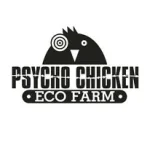In response to another one of those “you treatment free cooks…” posts, I put together some text and a lot of links to real facts (below).
It’s hard to see folks claim to be scientists, and spend a considerable amount of time on a ‘pretty article’ that turns out to be little more than an opinion post itself, with a mix of seemingly relevant ‘studies’ and ‘papers’ which if you take the time to research turn out to be funded primarily by the corporations that would like to do away with renewable energy, organic food, and common sense in exchange for profit. And then for the authors to have the audacity to say, ‘please cite references to back up your statements in the comments’…
Looking more at thoughtscapism’s ‘about’ page I see she’s been paid to provide articles for the “Genetic Literacy Project”…
Here’s all you need to know about the genetic literacy project:
“A GMO lobbying outfit funded by Monsanto, the “Genetic Literacy Project” is run by its Executive Director, the infamous Jon Entine, the world’s leading biotech shill and character assassination operative.”
Many of the links I’ve listed below you’ve seen before, the top one however, is new, and well worth the time to watch.
In response to (link intentionally broken so as not to promote these falsehoods in the search engines):
https://thoughtscapism dot com/2017/04/10/treatment-free-beekeepers-give-varroa-mite-free-rein
Some statements of fact (with references to back them up).
Bees have naturally evolved to resist varroa. New, and unpublished data (at the time of his talk) on feral colony mitochondrial DNA analysis pre and post varroa in New York State presented by Dr. Tom Seely of Cornell University and author of “Honeybee Democracy” definitively show that while feral colonies were drastically impacted by varroa, they have recovered and are thriving at similar levels to pre-varroa exposure:
https://www.youtube.com/watch?v=T7CB8E7jKBc
and another good article by Seeley:
http://www.naturalbeekeepingtrust.org/darwinian-beekeeping
Dr. John Keefus has been breeding varroa tolerant queens for more than a decade in the South of France rapidly creating resistant stock through actually adding varroa mites to his colonies, and published a paper in late 2016 showing his techniques applicable on a commercial scale:
http://www.tandfonline.com/doi/full/10.1080/00218839.2016.1160709
Kirk Webster has extensively written about his long experience in treatment free apiaries:
http://kirkwebster.com/index.php/collapse-and-recovery-the-gateway-to-treatment-free-beekeeping
Terry Coombs reminds us that this isn’t the first time we’ve seen a devastating impact from an introduced parasite–and that just as now, chemical treatments were not the answer but the bee’s own ability (if allowed to feel the impact of the environmental stress) to evolve has and will resolve the problems we experience now:
http://americanbeejournal.com/letters-editor-march-2017/
In their book “Top-Bar Beekeeping: Organic Practices for Honeybee Health”, Harrell and Crowder describe the transformation of their apiary when they walked away from treatments, stopped ‘managing mites’ and started working again with bees:
http://www.fortheloveofbees.com/
I’d like to note that this book is great for both top-bar and langstroth keepers alike. Concise, well written, extremely informative.
And my own feelings on the topic, synthesized from my own experience as a certified beekeeper, masters level biochemist, and more importantly, observer of nature and one who relishes common sense.
https://www.psychochickenecofarm.com/2017/04/11/let-bees-be-bees/
None of the above suggests treatment free beekeeping is easy. But even here in North Carolina, a state with a long, history of beekeeping (and I believe with the largest number of certified beekeepers in the US) where ‘treat and feed’ have been the long accepted mantra, the current president of the state beekeeping association, Rick Coor, (https://www.ncbeekeepers.org/about/leadership) is a treatment free queen breeder in the central part of the state and Aron Where of (https://www.wehrloom.com/) runs a 300 hive strong treatment free honey production operation at the Western end of the state, and a showing of hands at a recent Buncombe County Beekping meeting showed around 50% of the 50 or so people present were treatment free beekeepers.
Things are changing, but as long as we remove the environmental factors that encourage bees to strengthen their own genetics, they won’t, and its time for us all to recognize that treating mites is driving mite evolution rapidly to a stronger and more aggressive condition. You just have to look at the list of chemical treatments no longer considered effective to know that the mites are evolving:
https://www.ncbi.nlm.nih.gov/pmc/articles/PMC5371937/
Who wants weak bees you have to keep on ‘life support’ to survive?
Losing 90% of your colonies is a difficult pill to swallow (and what you can expect when you go cold turkey treatment free) but with thoughtful, careful management, things don’t have to go that way, and once you’re over the hump, your apiary becomes self sufficient, and treatment free with losses comparable to the treated apiary down the road (this is from my personal experience in Dr. Keefus Apiary in spring 2017 where he saw a 13% winter loss, which was better than the average treated apiary in that region in the South of France–data from an informal and probably statistically insignificant poll of local beekeepers).
The more people who choose a treatment free approach, the faster the general population of bees, both managed (hobby and commercial) and feral, will evolve to a stable state of tolerance with this new introduced pest, just as they did when the tracheal mite made it to the US in the 80’s. 2015 tracheal mite infections in NC were less than 1% (passed on to our club wncbees.org, by Jack Hanel, NCDA).




